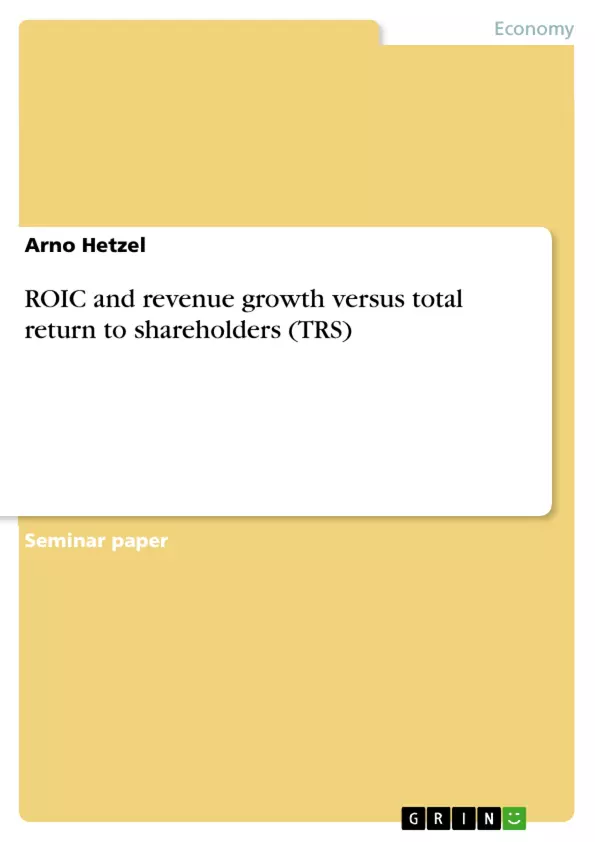In this paper, the key variables of company valuation, return on invested capital (ROIC) and revenue growth, are connected to the total returns to shareholders (TRS). It will be examined whether a firm with higher ROIC and revenue growth numbers could lead to a lower TRS. For a better understanding of this specific field of practice, there will first be a brief explanation of the relevant terms in the next chapter.
Inhaltsverzeichnis (Table of Contents)
- Introduction
- Explanation of ROIC, revenue growth and TRS
- Discussion of the research question
- Conclusion
- References
Zielsetzung und Themenschwerpunkte (Objectives and Key Themes)
This paper investigates the relationship between key company valuation drivers, return on invested capital (ROIC) and revenue growth, and total returns to shareholders (TRS). The study aims to determine if a firm with higher ROIC and revenue growth could result in a lower TRS, challenging the conventional wisdom that these factors positively correlate with shareholder returns.
- Relationship between ROIC, revenue growth, and TRS
- The impact of growth and ROIC on shareholder value
- The role of the expectation treadmill in TRS
- Short-term versus long-term perspectives on TRS
- The potential risks of excessive revenue growth
Zusammenfassung der Kapitel (Chapter Summaries)
- Introduction: This chapter introduces the research question and provides a brief overview of the paper's focus on examining the potential disconnect between ROIC, revenue growth, and TRS.
- Explanation of ROIC, revenue growth and TRS: This chapter defines the key variables, ROIC, revenue growth, and TRS, and explores their relationship to company valuation. It highlights the importance of ROIC exceeding the cost of capital for value creation and discusses the various drivers of revenue growth, including market expansion, market share performance, and mergers and acquisitions. The chapter also introduces the concept of the expectation treadmill, where exceeding market expectations becomes increasingly difficult for companies with consistently strong performance.
- Discussion of the research question: This chapter examines the relationship between ROIC, revenue growth, and TRS. It explores the traditional view that strong ROIC and growth lead to higher TRS but highlights potential scenarios where this relationship could be reversed. The chapter discusses how short-term expectations and the expectation treadmill can influence TRS, potentially leading to lower returns despite high ROIC and growth. It also analyzes the risks associated with excessive revenue growth, such as proliferation and market share losses.
Schlüsselwörter (Keywords)
The paper focuses on the key concepts of return on invested capital (ROIC), revenue growth, total returns to shareholders (TRS), shareholder value, the expectation treadmill, and the potential risks of excessive revenue growth.
- Citation du texte
- Arno Hetzel (Auteur), 2018, ROIC and revenue growth versus total return to shareholders (TRS), Munich, GRIN Verlag, https://www.grin.com/document/449815



